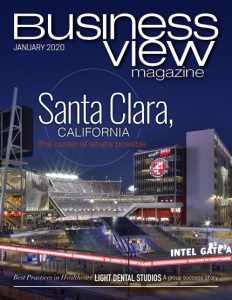According to some economic pundits, at the end of the 2010s decade, the United States finds itself in the midst of what is called a “Goldilocks Economy” – one that is not too hot, and not too, cold, but like Baby-bear’s porridge in the children’s fairy tale: “just right.” That suggests that there are some economic indicators that are positive, some that are negative, and some that are merely benign – a mix that, in the aggregate is okay, for now, but with some potentially troubling signs, ahead.
“Right now, economic growth is decent, but once you dig below the surface, things look a little bit more fragile,” says Scott Anderson, chief U.S. economist at San Francisco-based Bank of the West. “It’s a bifurcated expansion. We’re really looking at a tale of two different realities.”
First, the good news: The period from 2010 to 2020 saw the longest economic recovery on record – 126 straight months – the first time, ever, in U.S. history that the economy ended an entire decade without entering a recession. The unemployment rate went from 9.5% in 2010 to its current 3.6%; the GDP went from $14.5 trillion to $21.54 trillion with a current growth rate of 2.15%; core inflation sits at 2.4%; the yields on 10-year Treasury bonds are below 2%; the stock market is booming; corporate profits have soared; mortgage rates are low; and since the Affordable Care Act was enacted in 2010, the uninsured rate has fallen by more than 40 percent – by far the largest decline since the years after the creation of Medicare and Medicaid.
The bad news is that we haven’t used this good economic situation to reduce the national debt, which has increased by about $9 trillion over the past decade, and now sits at a debt-to-GDP ratio of 105.5% ($23.069 trillion total public U.S. debt, divided by the $21.54 trillion nominal GDP) which, according to most economists is way too high. In 2020, it is estimated that the federal government will spend over 10% of its budget just on the interest payments of the $18 trillion worth of public debt owed to lenders outside of itself. That’s approximately $460 billion that can’t be spent on our aging infrastructure, educating our kids, or providing better healthcare for underserved Americans.
Another mixed signal: Over the last decade, U.S. household wealth has increased 80%, but that wealth was spread very unevenly. More than one third of the gain went to the top 1%; a quarter to the middle and upper-middle classes; but less than 2% to the bottom half of the population, continuing the growth of income inequality that has mushroomed since the Great Recession.
Then, there’s the “trade war” between the U.S. and China. The dispute, which has simmered for nearly 18 months, has seen both countries impose tariffs on hundreds of billions of dollars worth of one another’s goods, contributing to a slowdown in domestic business investment and manufacturing, while concomitantly hurting American farmers, who have been caught in the crossfire of a war they never wanted.
Happily, while business owners and managers are pulling back, due to doubt and uncertainty about the future (investment in equipment, software, research, and structures fell by 3% in September, according to the U.S. Dept. of Commerce), the American consumer has been picking up the slack; 68% of total GDP is personal consumption expenditures – all goods and services produced for household use. In the third quarter of 2019, consumer spending grew by 2.9%, contributing more to growth than any other category. And recent holiday sales rose 3.4% over 2018, with online sales growing a whopping 18.8% – a good sign for retailers.
So, here we are, at the dawn of a new decade. And just like Goldilocks, we’re looking for the “just right” in the economy, careening between the too hot and the too cold, and wondering whether, in the end, we’ll get the bear, or if the bear will get us.

